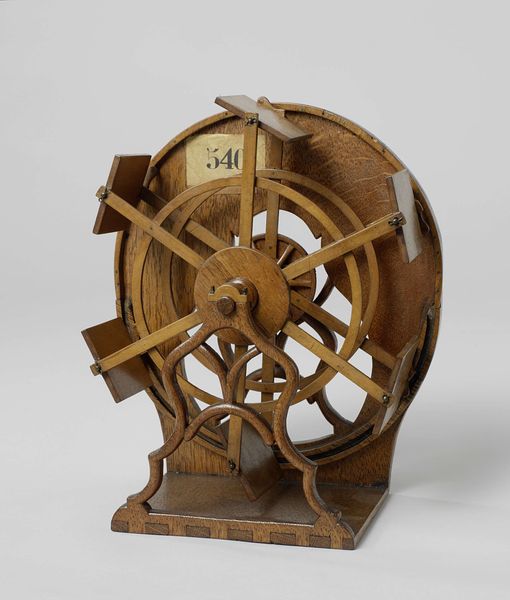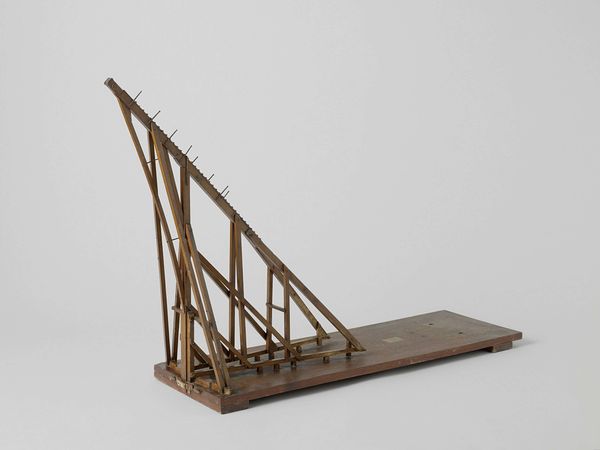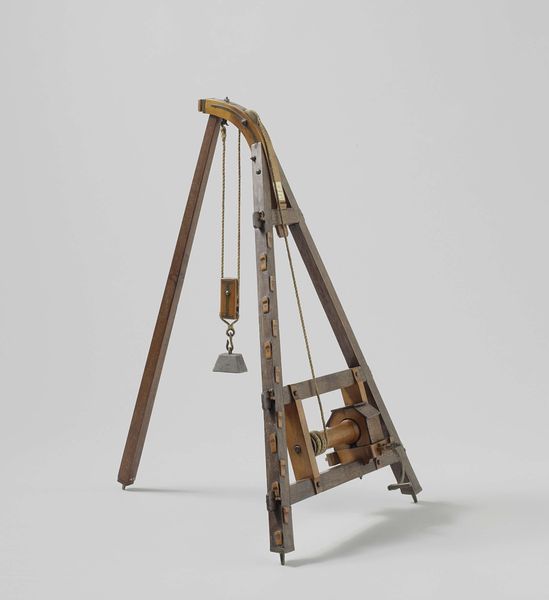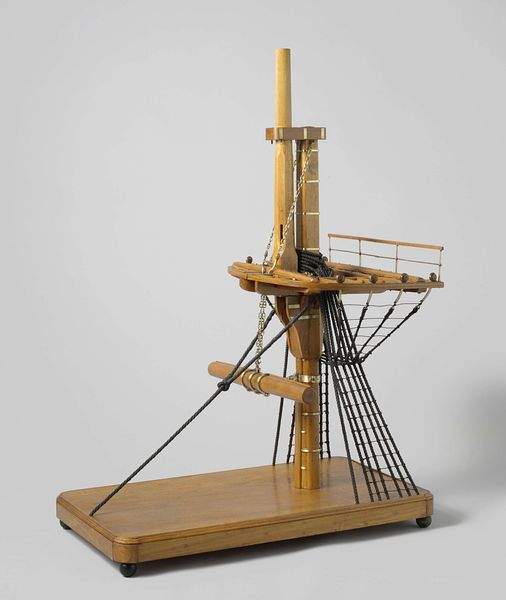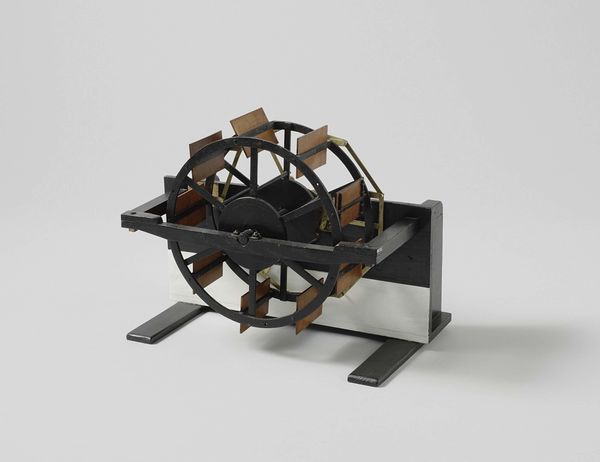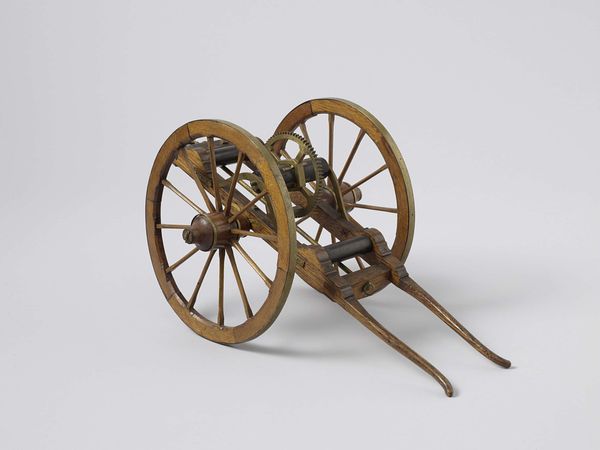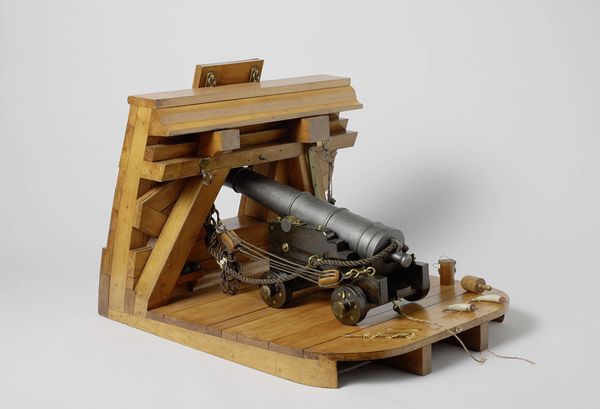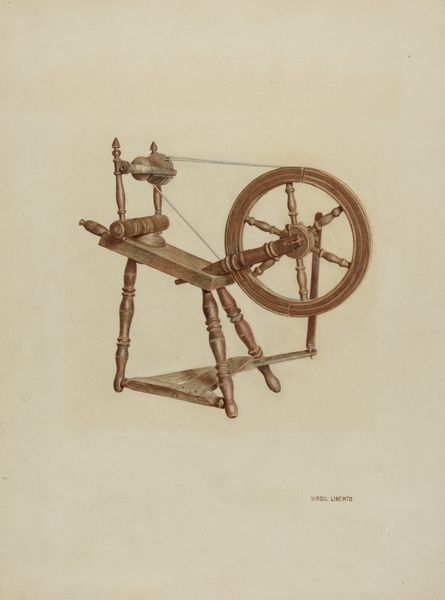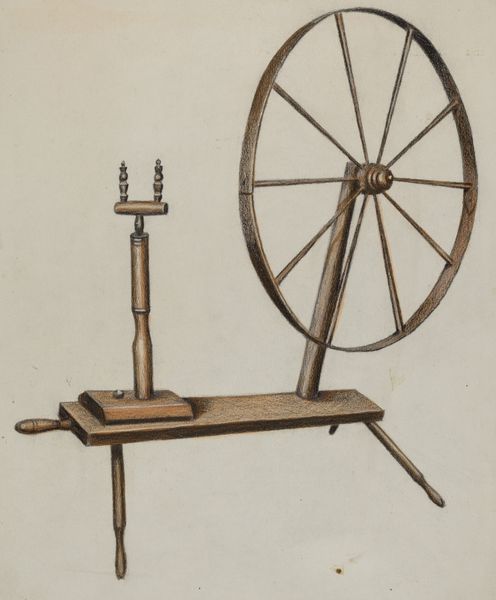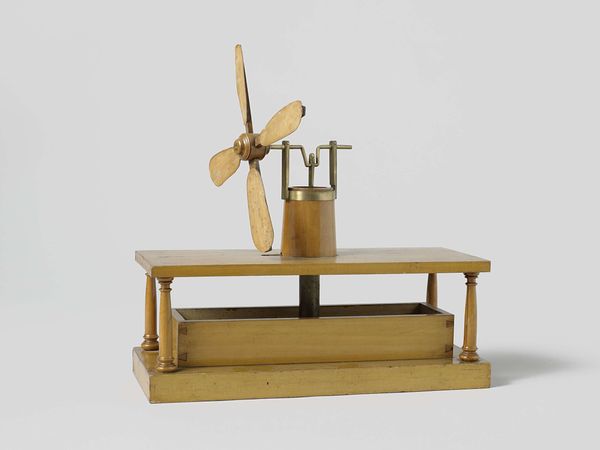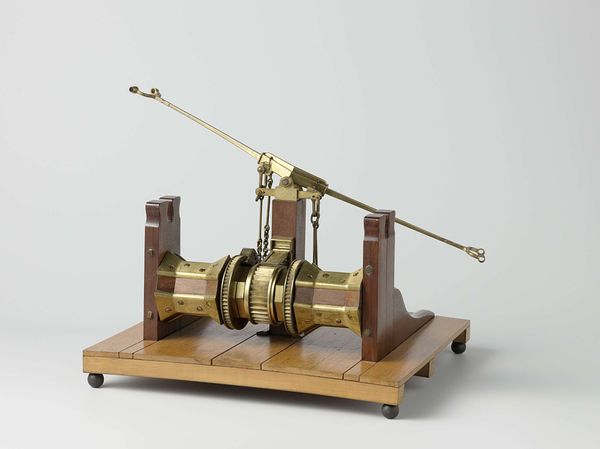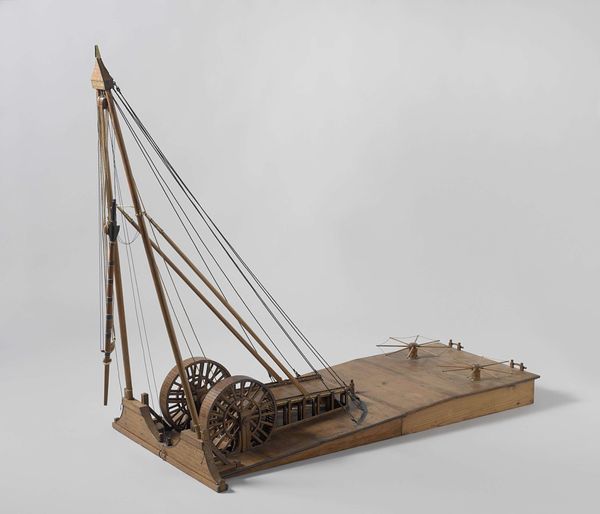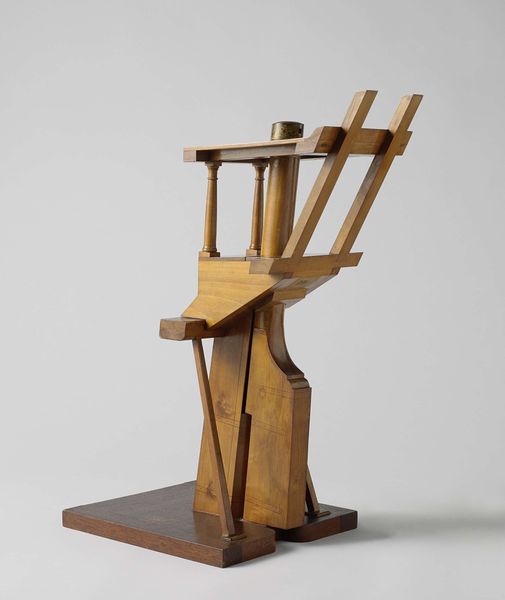
metal, sculpture, wood
#
circular oval feature
#
3d model
#
3d printed part
#
rounded shape
#
metal
#
shading render
#
3d shape
#
geometric
#
sculpture
#
3d modeling
#
wood
#
round circular shape
#
history-painting
#
cut-out
#
academic-art
#
cutout
Dimensions: model height 55.5 cm, model width 30.5 cm, model height 67.5 cm, packaging capsule width 59.5 cm, packaging capsule depth 38.5 cm, packaging capsule height 67.5 cm
Copyright: Rijks Museum: Open Domain
Editor: Here we have an early 19th-century model of an artillery crane. It is made with wood and metal, and held at the Rijksmuseum. It looks almost like a children’s toy, a teaching tool that shows how mechanics operate. What details do you find compelling? Curator: The proportional relationships are meticulously constructed. Observe how the circularity of the wheel counterbalances the rectilinear structure of the crane’s arm. The artist, though perhaps unconsciously, invites the viewer to perceive the interplay between volume and line. Editor: So it's more about the shapes than its function as a tool? Curator: Precisely. The artist’s intent, perhaps, lay not in documenting engineering prowess, but in exploring a formal arrangement of shapes and masses. Consider the material reality: the wood's grain, the metal's sheen. Do they not also contribute to an aesthetic end? Editor: Definitely, the rough textures play a big part! Looking at it this way, it brings a certain beauty to engineering. I didn’t consider the intent behind its shape. Curator: The composition guides our eye vertically, the lines almost like the ascent in Gothic architecture, reaching towards something… greater than the materials themselves. A semiotic interpretation suggests that the parts constitute more than the whole, perhaps representing 19th-century attitudes toward scientific progress and aspiration. Editor: I never considered sculpture capable of achieving that much in terms of symbolism, given its function! Thanks for shedding light on its artistry beyond engineering! Curator: Indeed, exploring art is about unveiling how its parts constitute meaning. It gives insight not only into forms, but also into what is unseen.
Comments
No comments
Be the first to comment and join the conversation on the ultimate creative platform.
